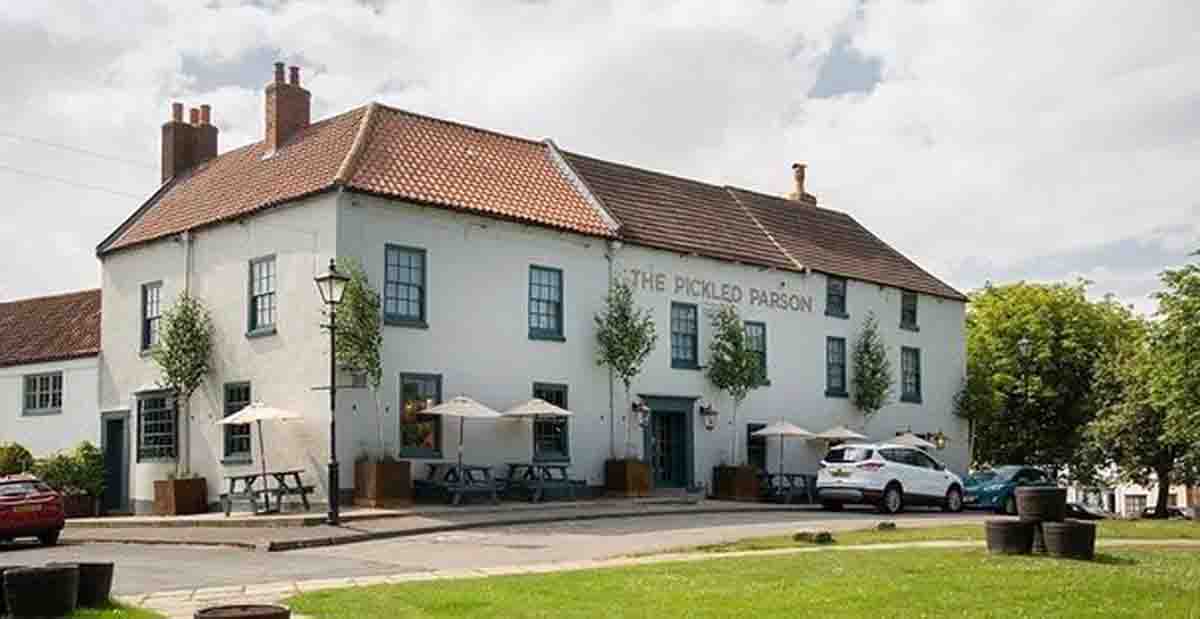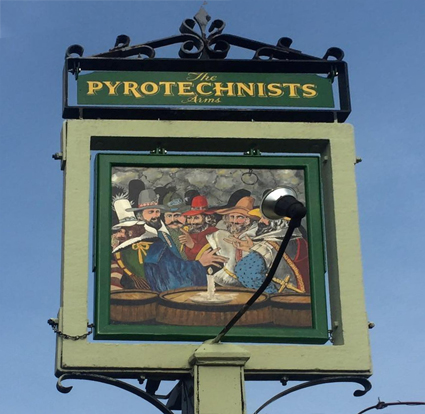
Often marking events from throughout the more than a thousand years of public houses in Britain, here are some of the most unusual names put to pubs.
The Bucket of Blood in Cornwall is a vestige of the town’s smuggling heyday in the 1700s. An estimated 150k people took part in the practise and the exchequer regularly sent tax collectors to retrieve revenues.
The landlord of the New Inn reputedly draw water from the well one day, finding in the bucket the severed head of a revenue collector. The pub adopted the name in 1980 in commemoration of the tale.
The Drunken Duck of Ambleside is understood to have gotten its name after the landlady spotted what she thought was a dead duck in the yard. She brought it inside and plucked it for supper, but suddenly the duck awoke and began flapping about. It turned out a beer barrel and leaked into the ditch from where the duck drank, and it was merely intoxicated.
The woman knitted an outfit for the plucked duck to keep it warm until its feathers grew back, which drew curious visitors, in turn prompting the landlord to change the name, from the less intriguing Station Hotel.
The Pickled Parson of Sedgefield tells the tale of Reverend John Garnage, who died suddenly late 1747 – shortly before collection of the tithes owed by the local farmers and landowners. Eager to see the money for herself and her children, the parson’s wife kept her husband’s death secret and preserved his body in a barrel of brandy until after the tithes were paid, upon which time she dried the body and informed the doctor, who attributed the odour to the Reverend’s notorious drinking and issued a death certificate.
A pub in Mayfair now known as The Only Running Footman once held claim to the longest pub name in London for its unabridged moniker – I Am The Only Running Footman. This title stemmed from one of the last servant footmen, whose job it was to run ahead of and clear the way for carriages. Improved transport and roads rendered the job obsolete, and one outgoing footman elected to acquire a pub, which he renamed, from The Running Horse.
Although London’s The Pyrotechnists Arms once donned a sign depicting those involved in the infamous Gunpowder Plot of 1605, this is actually not the source of its name, which in fact comes due to its proximity to Brocks Fireworks – considered to be the oldest fireworks maker in England.
My Father’s Moustache of Lincolnshire claims no significant history in its brand. Instead, it is said that the proprietor four decades ago built an extension and decided to rename the establishment. Asking his kids, they suggested the new name celebrate his facial hair.
Laying claim to being possibly the oldest pub in Britain, Ye Olde Fighting Cocks reopened in April after a pandemic-induced closure. The 1000-plus-year-old pub has survived many an ordeal and conflict, including a push in 2015 to change its name to something less akin to chicken violence.
Britain has become famous for its quirky pub names, also counting such pearls as The Cat and Custard Pot, and Ye Olde Trippe to Jerusalem.
The most common name throughout the UK is The Red Lion, which derives from the personal crest of John of Gaunt, the third son of Edward III, who was a popular figure in the 14th century.
Also common is The Royal Oak, which is said to commemorate King Charles II hiding from Cromwell’s forces following the 1651 battle of Worcester – in an oak tree. Signs outside many of the pubs depict Charles in the tree.
One of Britain’s largest pub chains is J D Wetherspoons, which is understood to have cobbled together the name of founder Tim Martin’s former geography teacher with the initials of his favourite TV character, J D ‘Boss’ Hogg, in 80s sitcom The Dukes of Hazzard.
For more on the history of British pubs, see History UK – British Pubs.



Love the article about British Pub names. Notice Charles 11 is mentioned in connection with Royal Oak Pubs.
Did you know there is a ‘connection’ between Charles 11 and the Melbourne Cup?
His favourite horse was named Old Rowley. Well, the winner (at 100/1) of the 1940 Melbourne Cup was named Old Rowley.
I’m guessing someone in that era was a student of history.